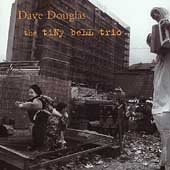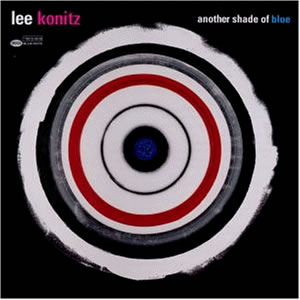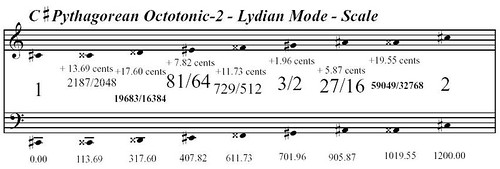
The E Pythagorean Phrygian
 DaveDouglas/Tiny Bell Trio: The Tiny Bell Trio
DaveDouglas/Tiny Bell Trio: The Tiny Bell Trio Elliott Sharp/Orchestra Carbon: Abstract Repressionism: 1990-1999
Elliott Sharp/Orchestra Carbon: Abstract Repressionism: 1990-1999 Eric Dolphy: Out To Lunch
Eric Dolphy: Out To Lunch Array Music: Chroma
Array Music: Chroma The Bill Frisell Band: Where In The World?
The Bill Frisell Band: Where In The World?
 Suspicious Activity? by The Bad Plus (2005). My approach to the music of The Bad Plus is about as roundabout as they come. During their most recent stint at the Village Vanguard I read a deeply unflattering writeup that made them sound like something I wouldn't be in to. At some point I started following the band's blog: Do the Math and became impressed with just how smart they are. When Ethan Iverson posted his list of great jazz recordings from 1973-1990 in response to Dave Douglas musings about post-Vietnam era music I knew I had to check this group out. They have taste and great influences. So with Suspicious Activity? added to my collection I couldn't be happier with the sound.
Suspicious Activity? by The Bad Plus (2005). My approach to the music of The Bad Plus is about as roundabout as they come. During their most recent stint at the Village Vanguard I read a deeply unflattering writeup that made them sound like something I wouldn't be in to. At some point I started following the band's blog: Do the Math and became impressed with just how smart they are. When Ethan Iverson posted his list of great jazz recordings from 1973-1990 in response to Dave Douglas musings about post-Vietnam era music I knew I had to check this group out. They have taste and great influences. So with Suspicious Activity? added to my collection I couldn't be happier with the sound.
 Today found the HurdAudio ear hooked on this great Lee Konitz recording from March 1969: Peacemeal. Konitz has been such a consistent (and not nearly heralded enough) force on the alto and tenor saxophones and this session is nearly a perfect balance of ideas, groove, form and tight arrangements.
Today found the HurdAudio ear hooked on this great Lee Konitz recording from March 1969: Peacemeal. Konitz has been such a consistent (and not nearly heralded enough) force on the alto and tenor saxophones and this session is nearly a perfect balance of ideas, groove, form and tight arrangements. Keystone has been in heavy rotation at HurdAudio for some time now. Dave Douglas autographed my copy along with simple instructions: "Enjoy." That hasn't been a problem.
Keystone has been in heavy rotation at HurdAudio for some time now. Dave Douglas autographed my copy along with simple instructions: "Enjoy." That hasn't been a problem.


It's Blogday 2006! As per the custom, here are links to 5 blogs from around the world focusing on subject matter not normally discussed at HurdAudio:
1) Topological Geometrodynamics Journal. From Hanko, Finland.
2) Chicano Art and Literature. From San Diego, CA, USA.
3) Okansas. Daily thoughts on orienteering from Kansas City, MO, USA.
4) Serve It Forth. From Los Angeles, CA, USA.
5) Gone Gaming. Hard core board game fans from points unknown.
Happy Blogday!
--------------
On a blog related note. I've decided to split out my baseball content onto a second blog: Leather, Runs & Repeat.
----------------
